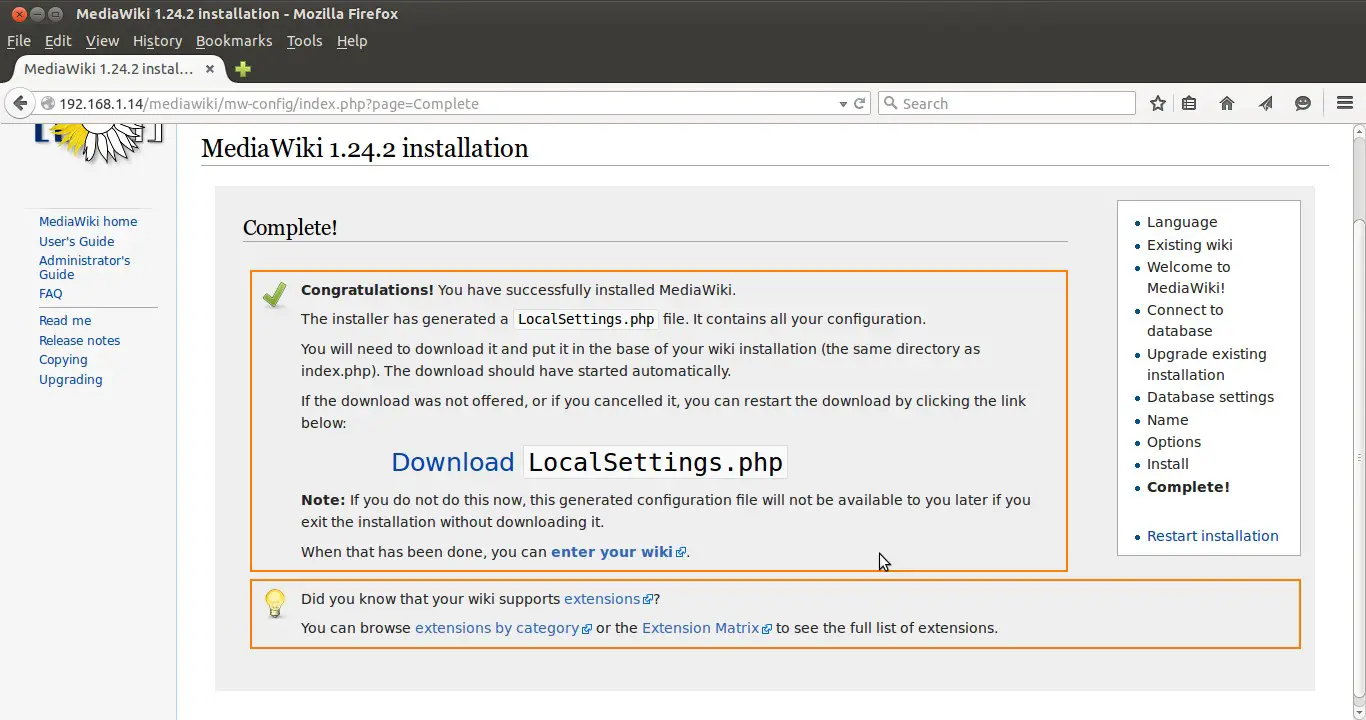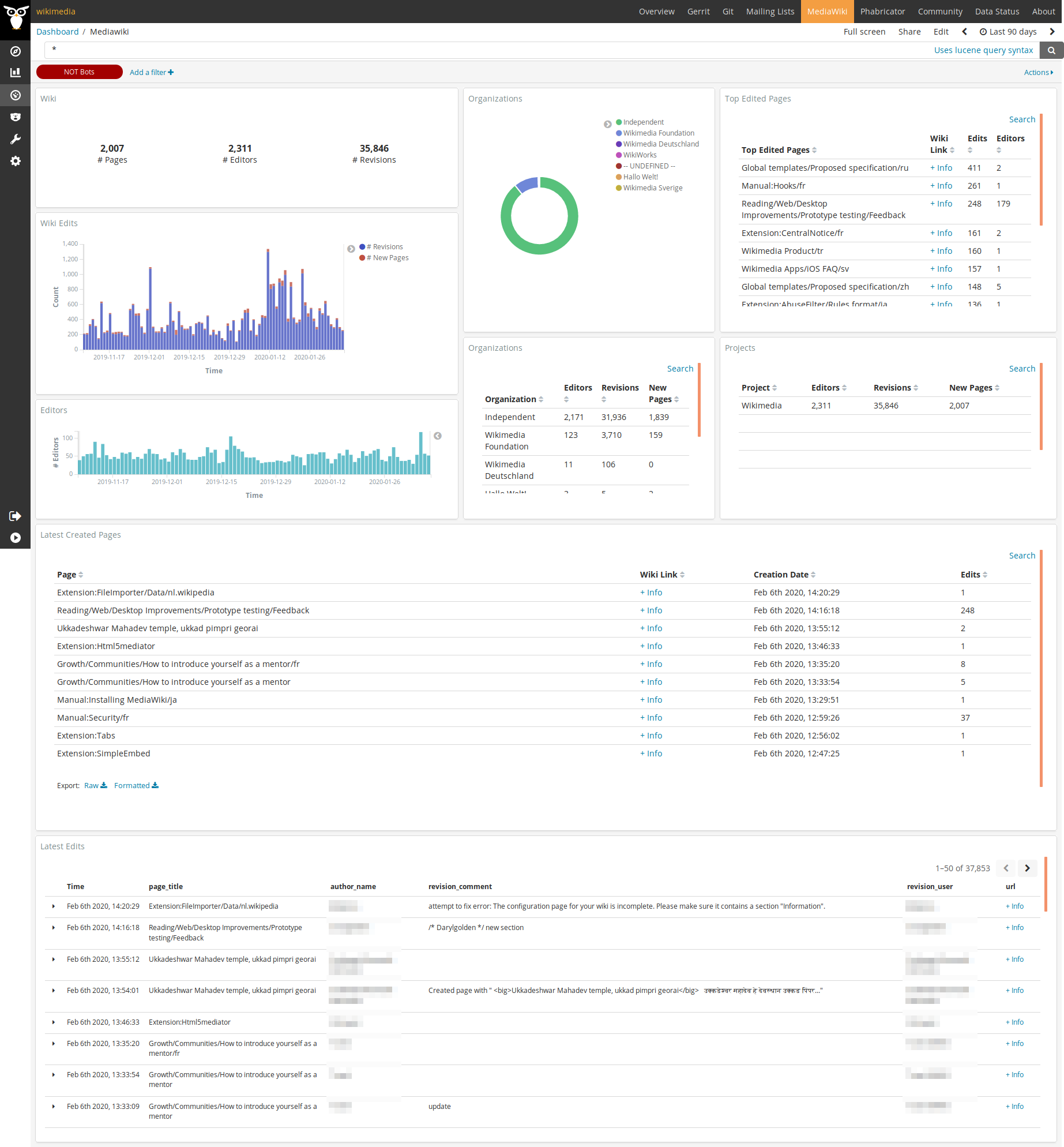

- #Mediawiki configure install#
- #Mediawiki configure manual#
- #Mediawiki configure archive#
- #Mediawiki configure software#
- #Mediawiki configure password#
On this screen you will enter all information required for the installation of MediaWiki.Įnter your e-mail address here. You can find more information about your MediaWiki installation in the MediaWiki documentation. More information about MediaWiki can be found here. It is now also used by several other projects of the non-profit Wikimedia Foundation and by many other wikis.
#Mediawiki configure software#
MediaWiki is a free software open source wiki package written in PHP, originally for use on Wikipedia.
#Mediawiki configure install#
MAMP PRO offers you the simple possibility to install a current MediaWiki directly from the app for a host. Automated processes, packages, bundles, and services all come with their own idiosyncrasies.Settings > Hosts > General > Extras > MediaWiki
#Mediawiki configure manual#
Manual installation is often the preferred method because it gives the user more control and insight into how their wiki is installed, making troubleshooting and maintenance easier. Appendices Alternatives to manual installation

Subscribe to the MediaWiki release announcements mailing list. Once installed, make sure you stay up to date with releases, and keep your server secure!
#Mediawiki configure password#
The following commands create a database named my_wiki, a user named wikiuser, and set permissions for the user on that database.ĬREATE USER wikiuser WITH NOCREATEDB NOCREATEROLE NOSUPERUSER ENCRYPTED PASSWORD 'database_password' CREATE DATABASE my_wiki WITH OWNER wikiuser īeware of the list of known issues when running MediaWiki with PostgreSQL. Alternatively, contact your hosting provider to have them create an account for you.

See the corresponding documentation of your hosting provider. Use ssh to log into your host and type the commands below into a MySQL prompt.Use a control panel software offered by your Hosting service (example: PhpMyAdmin).If this directory is not safe (for example, web-readable), change it manually to avoid making it accessible to everyone on the web.Ĭreate the MariaDB/ MySQL database and database user. On the SQLite installation page, choose a database name (which can be anything) and the SQLite database directory.įor the database directory, the installer will attempt to use a subdirectory outside of the document root and create it if needed. No further setup is required for SQLite if the pdo-sqlite module for PHP is installed on the system. If you're unsure which database to choose, use MariaDB.Īfter finishing the database setup, continue with #Run the installation script below. PostgreSQL and SQLite have limited support and should not be used unless there is a reason to. MariaDB/MySQL are the recommended databases. If you don't know the password for the root user, for example if you are on a hosted server, you will have to create a new database before you run the MediaWiki installation script in the next section. If you already have a database server and know the password for the "root" (admin) user, skip to the #Run the installation script section below. MediaWiki's installation script will ask you for a database name and database username, so MediaWiki can store the content of the wiki. If your web server is running as for example, renaming to /w/ directory would mean you would access your wiki at Do not use /wiki/ if you want to set it up as a Short URL after running the installation script. Rename the uploaded folder to whatever you would like to have in the URL. In Red Hat and Fedora, the file is /etc/httpd/conf/nf. In Debian and Ubuntu, the file for Apache server settings and directories is /etc/apache2/nf. The exact location of the Apache server settings and directories file nf depends on your operating system. If you use the Apache HTTPD web server, the correct directory is specified in your nf file in the DocumentRoot directive.īy default, this is /var/www/ or /htdocs. If your upload tool has a "change file names to lowercase" option, then you must disable this. by using software already provided by your hosting service, such as the cPanel File Manager.by using an FTP client such as FileZilla (Windows, OSX and Linux) or Cyberduck (Windows and OSX).directly copying the unzipped folder or.Upload the files to your web server's web directory either by: If you have not already uploaded the files to your web server (or copied, if your web server software runs locally on your localhost), do so now. On Linux systems, the command would be using chown as the following: chown -R More info: Manual:Security#File_permissions
#Mediawiki configure archive#
If you uncompress the archive file while being the root/admin user, you may want to change file ownership afterwards, depending on your setup.


 0 kommentar(er)
0 kommentar(er)
